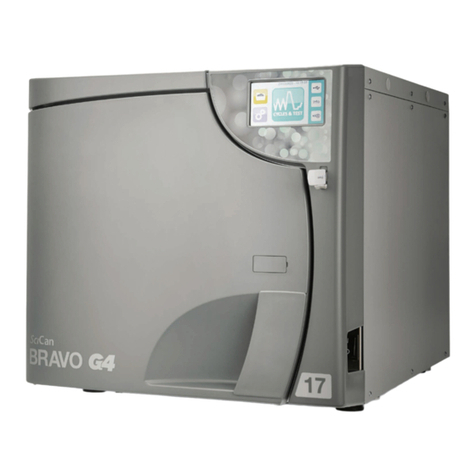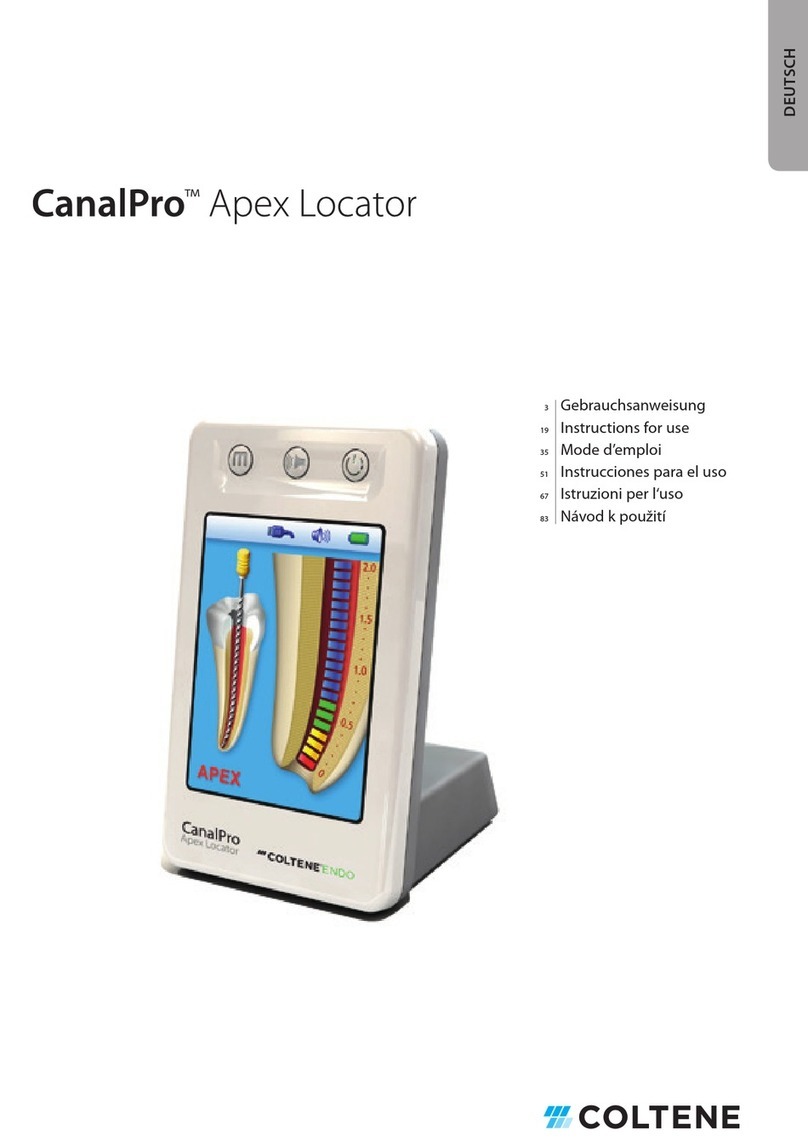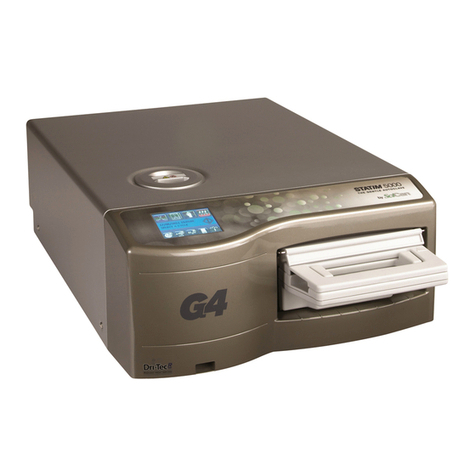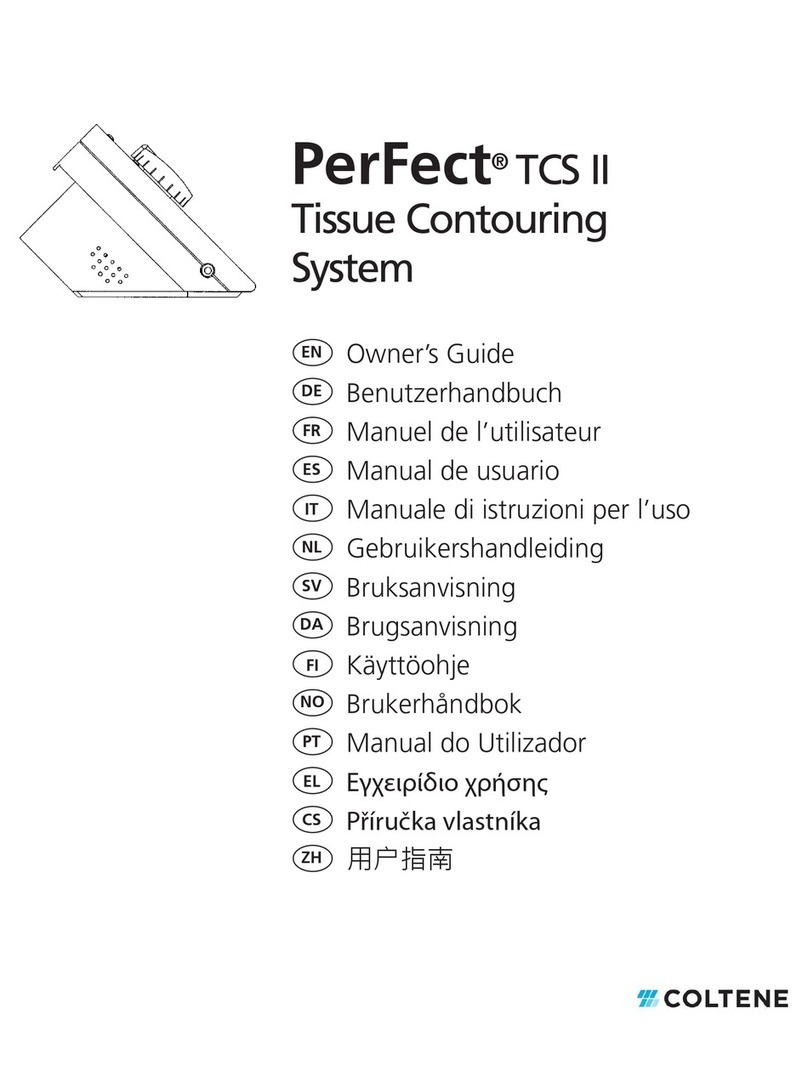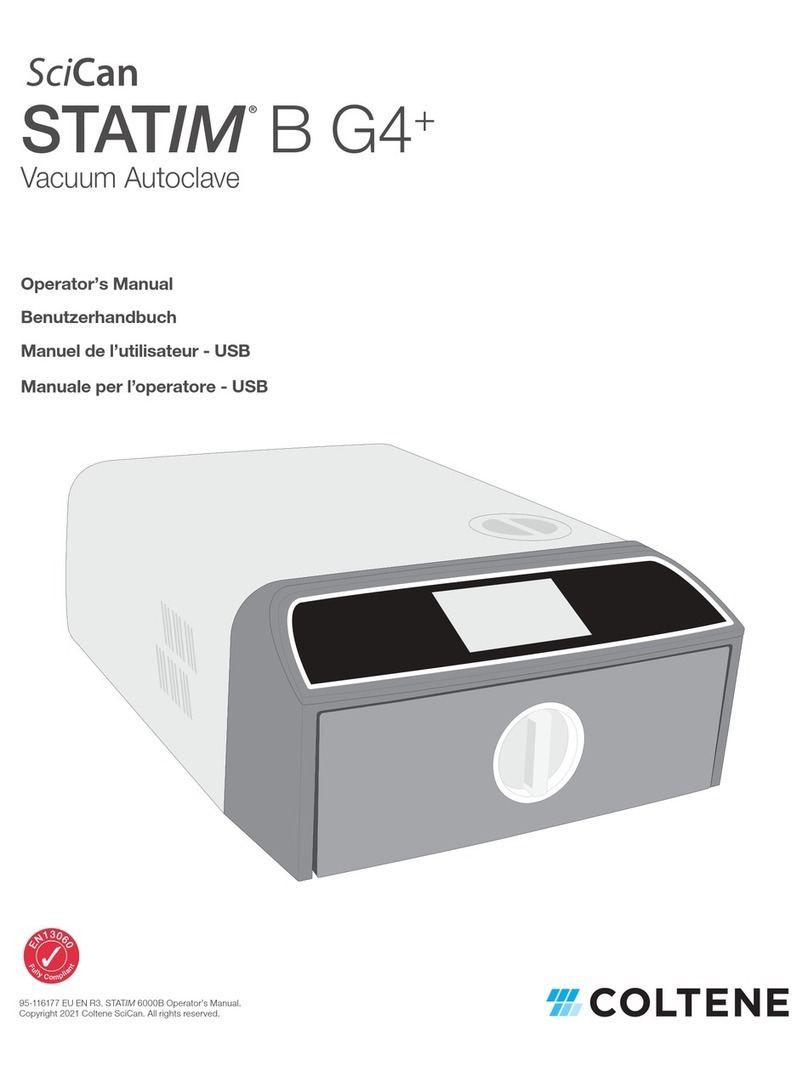
4BioSonic®Ultrasonic Scaler
III. Operating Instructions
A. Patient preparation and positioning
• Have the patient perform an antimicrobial pre-procedural
mouth rinse to reduce bacterial contamination of the aerosol.
• Place the dental chair in a supine position for optimal access
to both the maxillary and mandibular arches. This improves
patient comfort and increases clinician visibility.
• Position the patient’s head for optimum access to the quadrant
and tooth surface being treated. Evacuate water and debris
with a saliva ejector or high volume evacuator.
B. Ultrasonic scaling procedures
NOTE: Refer to section IV (Maintenance and Infection Control)
of this Owner’s Guide for general procedures to follow daily and
between patients.
General operating procedures:
1. Be sure the main dental office water supply valve is open.
2. Turn the unit ON using the ON/OFF button. Verify that the
green LED on the bottom right hand corner of the unit is lit.
3. Set the H2O control knob clockwise to the fully open position.
4. Hold the handpiece (without an insert installed) over a sink or
drain. Depress the foot control and flush the water line for at
least 2minutes.
5. Select the sterilized scaler insert.
6. Lubricate the O-ring with water before placing the insert into
the handpiece. Depress the foot switch pedal while filling the
handpiece with water and slowly turning the insert until it
snaps into place. (Fig.7)
7. Set the power and H2O control knobs to your preferred
operating positions. NOTE: Use the lowest effective power
setting possible when scaling. (Scaler inserts should be
sterilized before first use on each patient. See section IV,
partA.)
C. “Turbo” feature
• The “Turbo” button on the bottom left corner of the unit may
be depressed to switch to maximum power, without having to
adjust the preferred power setting. When the “Turbo” mode is
selected, the LED above the button will be lit.
• It is not possible to adjust the power with the power knob as
long as the “Turbo” is on.
• To turn the “Turbo” mode off, depress the button again. The
LED will not be lit.
• The “Turbo” feature is helpful to remove stubborn pieces of
calculus, and should only be used as a temporary mode of
operation.
• It may be necessary to adjust the H2O knob with the unit in
“Turbo” mode to assure adequate fluid delivery to the tip and
the tooth.
D. Helpful hints
• Use the lowest effective power setting possible when scaling.
• If the handpiece becomes hot to the touch, there is either too
little water, too much power or both. Adjust power and/or
water settings accordingly.
• The rubber O-ring on the insert must be lubricated with water
before placing it in the handpiece. Not lubricating the O-ring
will make proper seating more difficult. Fully seat insert by
pushing inward while twisting until seated. DO NOT FORCE.
The handle on the insert should be flush against the handpiece.
Alternatively, lubricating the O-ring with a small amount of
petroleum jelly could prolong the life of the O-ring.
• Check and verify that fluid is reaching the working end of the
insert tip by holding the handpiece over a sink or drain and
activating the unit. Adjust the H2O control knob to ensure
adequate flow is achieved for the selected power setting. A
fine mist should be spraying from the scaler insert tip (Fig.8).
• If water fails to flow properly, check supply line filter for
clogging. Filters are disposable. Replace if necessary. Do not
attempt to unclog used filters.
• To prevent accidental contact with the lips, tongue, and cheek,
the scaler insert should be activated just before contacting
the tooth, but after the insert has been placed in the patient’s
mouth.
• It is best to hold the handpiece in a pen grasp, using a very light
touch when scaling both supra and subgingivally. Too much
pressure of the tip against the tooth surface will decrease the
effectiveness of the insert, as tip vibration is obstructed.
• Periodically check the scaler insert for wear.
• Develop an operating sequence in scaling to ensure
thoroughness, and to minimize adjustments in patient and/or
operator position.
E. Patient discomfort can be caused by:
• Excessive pressure. Apply the side of the scaler tip gently to
tooth surface using very little pressure.
• Incorrect tip positioning. Avoid contact of the scaler insert tip
and the tooth. Direct the tip away from root surfaces, and use
side of scaler insert only.
• Not keeping the tip in motion on tooth. The tip should always
be in motion during scaling. Use vertical, horizontal, or oblique
overlapping strokes to increase scaling efficiency and decrease
discomfort.
• If sensitivity persists, alternate treatment of sensitive areas and
less sensitive areas and/or decrease power setting.
F. Turn the unit OFF using the On/Off button. Verify no LEDs are
activated on the front of the unit.
IV. Infection Control and Maintenance
A. Manual Cleaning
1. At the end of a procedure, flush the ultrasonic insert by leaving
the insert in the hand piece and turning the water flow knob to
max on the US100R. Activate the water flow by depressing the
footswitch, as done during normal operation, for a minimum
of 1minute. This is necessary to help remove soil trapped in
the insert tip from the procedure.
2. Rinse the components under running cold utility water to
remove all visible debris.
3. Fully immerse the insert(s) in a BioSonic®UC30 General Purpose
Cleaner detergent solution prepared per the manufacturer's
recommendation at 2 oz/gal (1:64 dilution rate). Soak the
device(s) in this detergent solution for 5minutes.
4. Brush the insert(s) with a soft bristled brush. Pay close
attention to all of the crevices of the device. Do not bend the
wire. Ensure all visible soil was removed.
5. Rinse the insert(s) under running warm utility water until all
visual evidence of detergent is removed.
6. Dry devices with a clean lint-free cloth.
7. Inspect device for visible soil. If visible soil remains repeat the
cleaning process.






